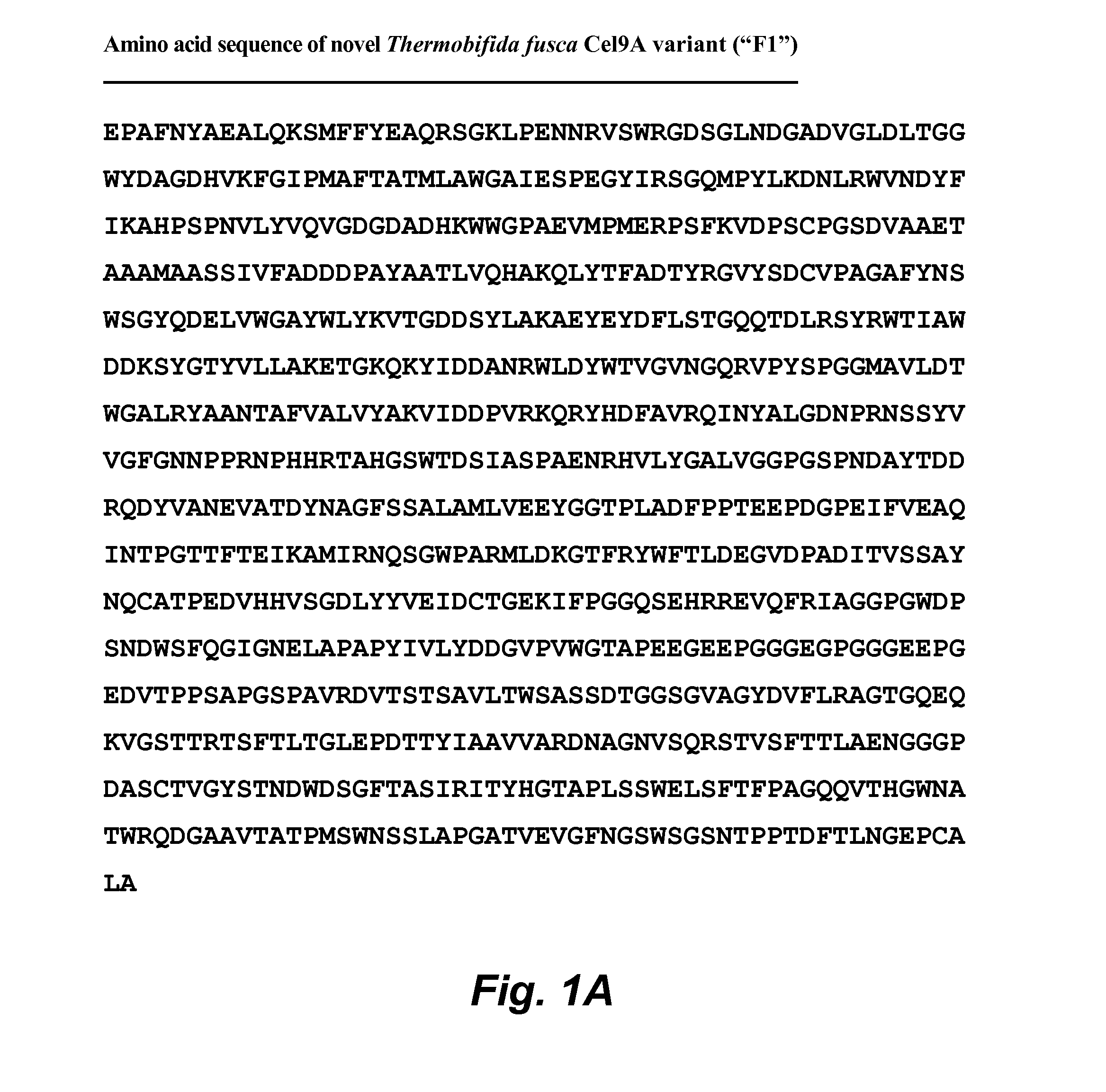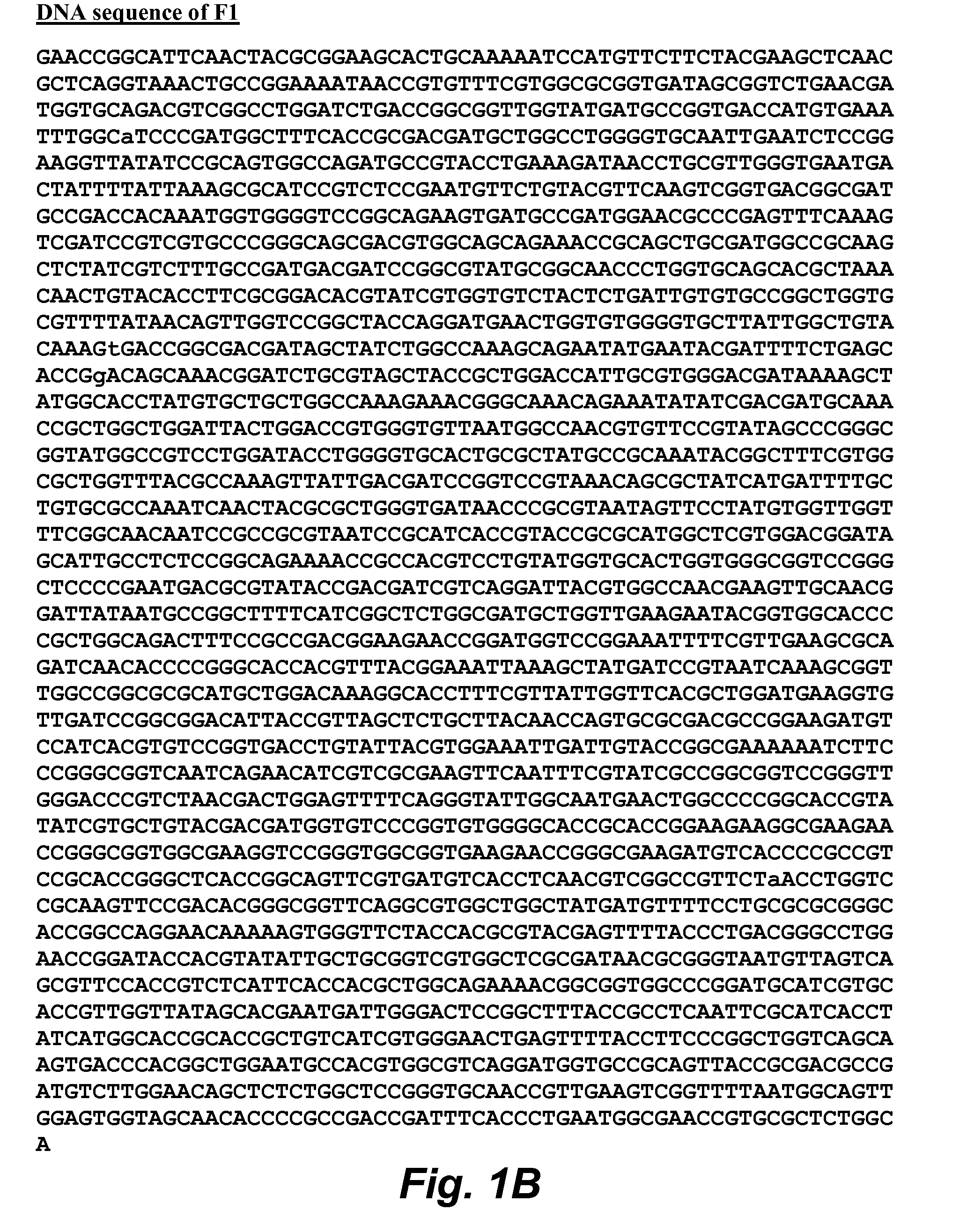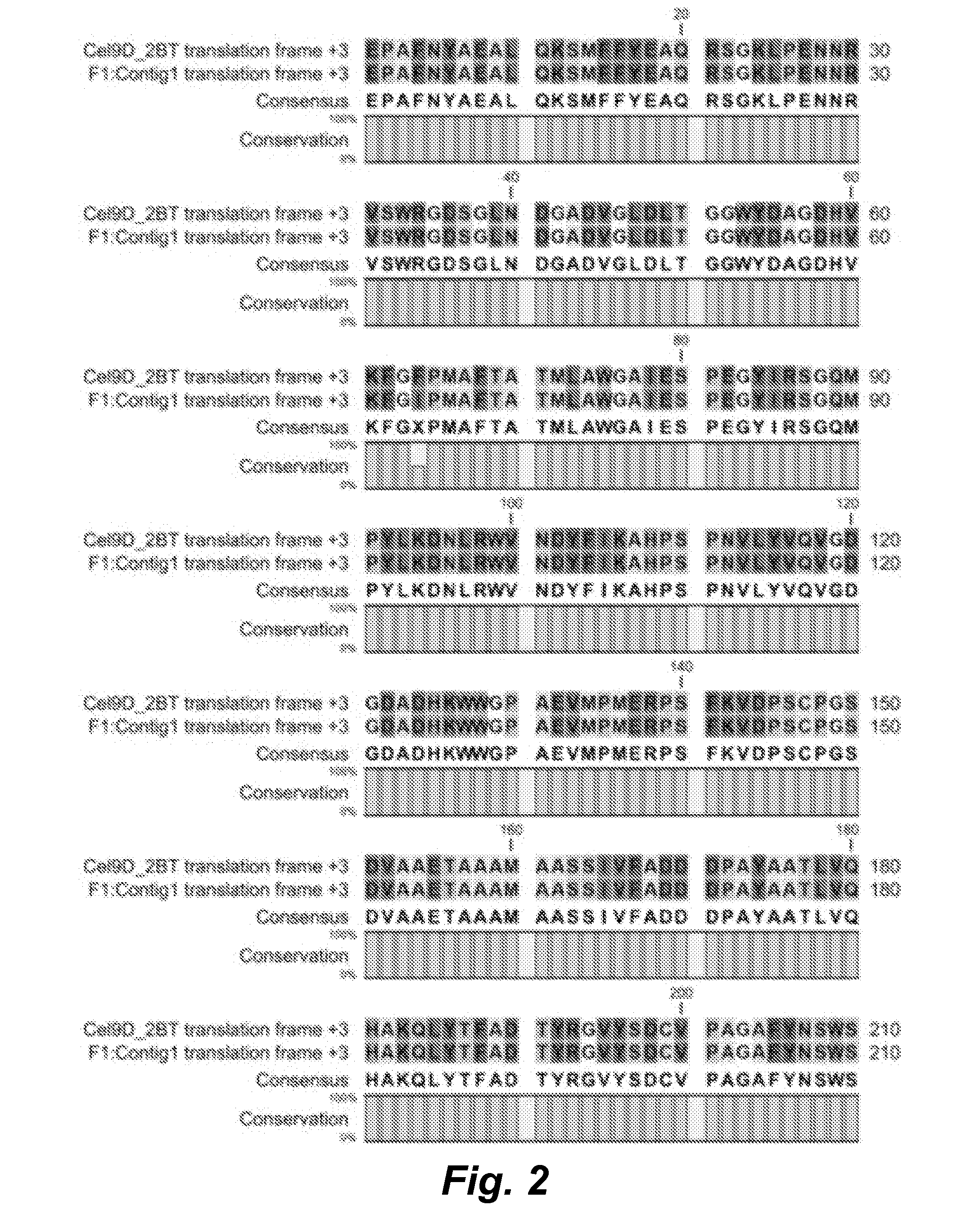Improved Cellulase Variants
a cellulase and variant technology, applied in the field of cellulase variants, can solve the problems of high cost and hydrolysis efficiency of enzymes, restrict the commercialization of biomass bioconversion processes, and large quantities of enzymes required for hydrolysis
- Summary
- Abstract
- Description
- Claims
- Application Information
AI Technical Summary
Benefits of technology
Problems solved by technology
Method used
Image
Examples
example 1
Expressing and Testing Activity of Cellulase Variants
[0151]Generating Plasmid
[0152]DNA encoding novel variants was PCR amplified using LIC-tailed gene-specific primers as follows: 0.3 μM primers (forward 5′-TAC TTC CAA TCC AAT GCA ATG GAA CCG GCA TTC AAC TAC-3′ (SEQ ID NO:8); reverse 5′-TTA TCC ACT TCC AAT GTT ATT ATG CCA GAG CGC ACG-3′(SEQ ID NO:9), 1 ng template DNA, 1×KOD Hot Start Master Mix (#71842-3, EMD Chemicals), water to 50 μL. Reactions were incubated at 95° C. for 2 min to activate the polymerase followed by 30× thermal cycling at 95° C. for 20 s, 60° C. for 10 s, and 70° C. for 30 s. Resulting amplicons were band-purified by agarose gel electrophoresis to remove non-specific amplicons and purified by using the illustra GFX PCR DNA and Gel Band Purification kit (#28-9034-71, GE Healthcare) according to manufacture protocols. 0.2 pmol of purified amplicon was treated at 22° C. for 30 min and 75° C. for 20 min with 1 U of LIC-qualified T4 DNA polymerase (#70099-3, EMD Chem...
example 2
Biofuel Production by Using Enzyme Variant F1
[0159]The following procedure may be used to produce ethanol from biomass. Generally, the procedure comprises simultaneous saccharification and fermentation (SSF) of pretreated lignocellulosic biomass whereby cellulases convert the biomass into accessible sugar and yeast ferment the sugar into ethanol.
[0160]Biomass may be pretreated in various manners. One method is to solubilize the biomass in concentrated phosphoric acid then precipitate the swollen cellulose using cold water. The cellulose is collected and washed with sufficient water to neutralize the pH. Alternatively, the biomass may be pretreated with dilute sulfuric acid. Briefly, milled and washed biomass at 20% total solids concentration is treated for 3-12 min in 0.5-1.41% (w / w liquid phase) H2SO4 at 165-183° C. Following treatment, the biomass is washed with water.
[0161]Simultaneous saccharification and fermentation is conducted in a shaking incubator (150 rpm) at a working vo...
PUM
| Property | Measurement | Unit |
|---|---|---|
| weight percent | aaaaa | aaaaa |
| weight percent | aaaaa | aaaaa |
| pH | aaaaa | aaaaa |
Abstract
Description
Claims
Application Information
 Login to View More
Login to View More - R&D
- Intellectual Property
- Life Sciences
- Materials
- Tech Scout
- Unparalleled Data Quality
- Higher Quality Content
- 60% Fewer Hallucinations
Browse by: Latest US Patents, China's latest patents, Technical Efficacy Thesaurus, Application Domain, Technology Topic, Popular Technical Reports.
© 2025 PatSnap. All rights reserved.Legal|Privacy policy|Modern Slavery Act Transparency Statement|Sitemap|About US| Contact US: help@patsnap.com



